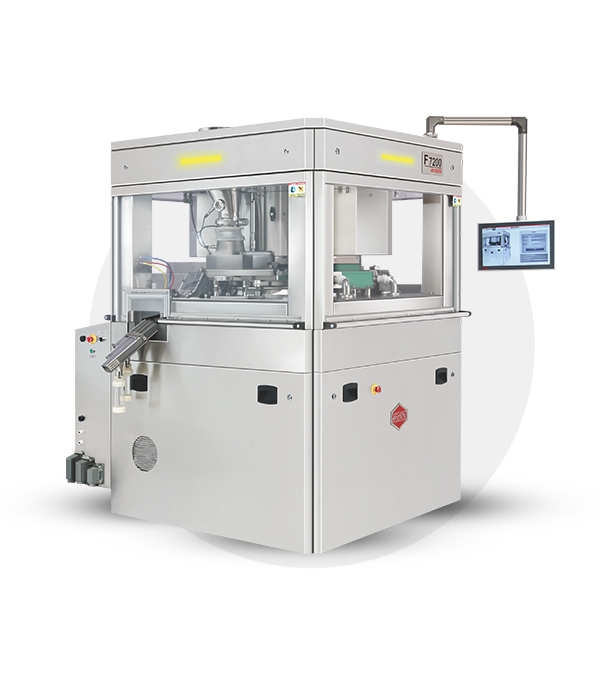Tablet compression machines are a fundamental component in pharmaceutical manufacturing, essential for transforming granulated powder into tablets and pills. These machines utilize precise mechanical processes to ensure the uniformity and quality of the produced tablets, which are crucial for effective medication. This article delves into the working principles, types, components, and operation of tablet compression machines, providing a comprehensive understanding of their function in the pharmaceutical industry.
Key Components of Tablet Compression Machines
Tablet compression machines consist of several critical components:
- Hopper: This is where the granulated powder is fed into the machine.
- Die: A cavity that determines the size and shape of the tablet.
- Punches: Upper and lower punches compress the powder within the die cavity.
- Turret: Holds multiple sets of punches and dies and rotates to facilitate continuous compression.
- Cam Tracks: Guide the punches through their respective movements.
- Feeder System: Ensures a consistent flow of powder into the die cavity.
- Pressure Rollers: Apply the necessary force to compress the powder into tablets.
- Discharge Chute: Ejects the formed tablets out of the machine.
The Working Principle

The core principle behind tablet compression machine is the application of hydraulic pressure to compress granulated powder into tablets. The process can be broken down into several stages:
- Filling: The granulated powder is fed from the hopper into the die cavity via the feeder system.
- Metering: The amount of powder entering the die cavity is controlled to ensure uniform tablet weight.
- Compression: The upper and lower punches come together, applying hydraulic pressure to compress the powder within the die cavity.
- Ejection: After compression, the lower punch rises to eject the formed tablet, which is then guided out through the discharge chute.
Types of Tablet Compression Machines
There are two primary types of tablet compression machines: Single Station Tablet Press and Multi Station Tablet Press.
Single Station Tablet Press (Eccentric Press)
The Single Station Tablet Press is also known as an eccentric press. It operates using a single set of punches and a die. This type is suitable for small-scale production or laboratory use due to its simplicity and ease of operation.
Working Process:
- The granulated powder is filled into the die cavity.
- The upper punch descends to compress the powder.
- The compressed tablet is ejected after compression.
Advantages:
- Simple design and operation.
- Suitable for small batches and research.
- Easy maintenance and cleaning.
Disadvantages:
- Low production output.
- Limited to producing one tablet at a time.
Multi Station Tablet Press (Rotary Press)
The Multi Station Tablet Press, commonly known as a rotary press, is designed for high-volume production. It features multiple sets of punches and dies arranged on a rotating turret, allowing simultaneous compression of multiple tablets.
Working Process:
- The turret rotates, bringing different sets of punches and dies into position.
- Granulated powder is continuously fed into the die cavities.
- Multiple punches compress the powder simultaneously.
- Formed tablets are ejected continuously as the turret rotates.
Advantages:
- High production capacity.
- Consistent tablet quality.
- Suitable for large-scale manufacturing.
Disadvantages:
- Complex design and operation.
- Higher maintenance requirements.
- Initial high investment cost.
Operational Aspects and Considerations
The operation of tablet compression machines involves several critical aspects to ensure efficient and consistent production:
- Granulation Quality: The quality of the granulated powder significantly impacts tablet formation. Proper granulation ensures uniformity and prevents issues like capping or lamination.
- Tooling: Precise tooling (punches and dies) is essential for maintaining tablet uniformity and preventing wear and tear.
- Lubrication: Adequate lubrication reduces friction between punches and dies, prolonging the machine’s lifespan and ensuring smooth operation.
- Compression Force: Proper adjustment of compression force is crucial for achieving the desired tablet hardness and integrity.
- Speed Control: Regulating the turret speed helps maintain consistent production rates and tablet quality.
Troubleshooting Common Issues
Tablet compression machines can encounter various issues that affect tablet quality and production efficiency. Here are some common problems and their solutions:
- Capping: Tablets splitting or breaking apart during ejection. This can be due to inadequate granulation, excessive compression force, or improper tooling.
- Solution: Improve granulation quality, adjust compression force, and inspect tooling for wear.
- Lamination: Tablets separating into layers. This can be caused by over-compression, improper powder mix, or inadequate die wall lubrication.
- Solution: Adjust compression force, ensure a homogeneous powder mix, and improve lubrication.
- Weight Variation: Inconsistent tablet weights can result from uneven powder flow, incorrect metering, or worn-out feeder components.
- Solution: Ensure consistent powder flow, calibrate metering system, and replace worn feeder parts.
- Sticking: Powder adhering to punches or dies, causing defects. This can occur due to insufficient lubrication or poor-quality granulation.
- Solution: Increase lubrication, improve granulation process, and use anti-adherent agents if necessary.

